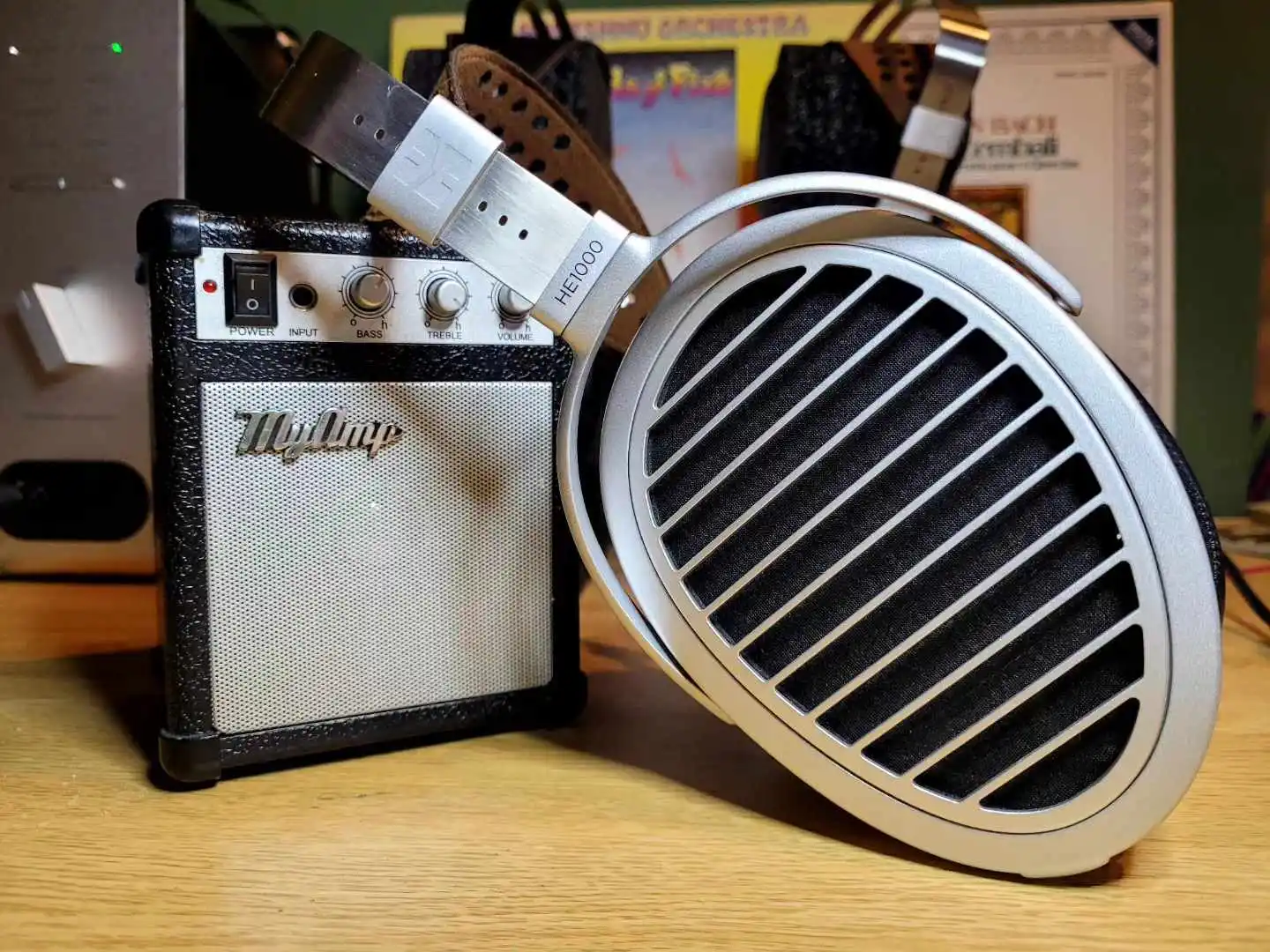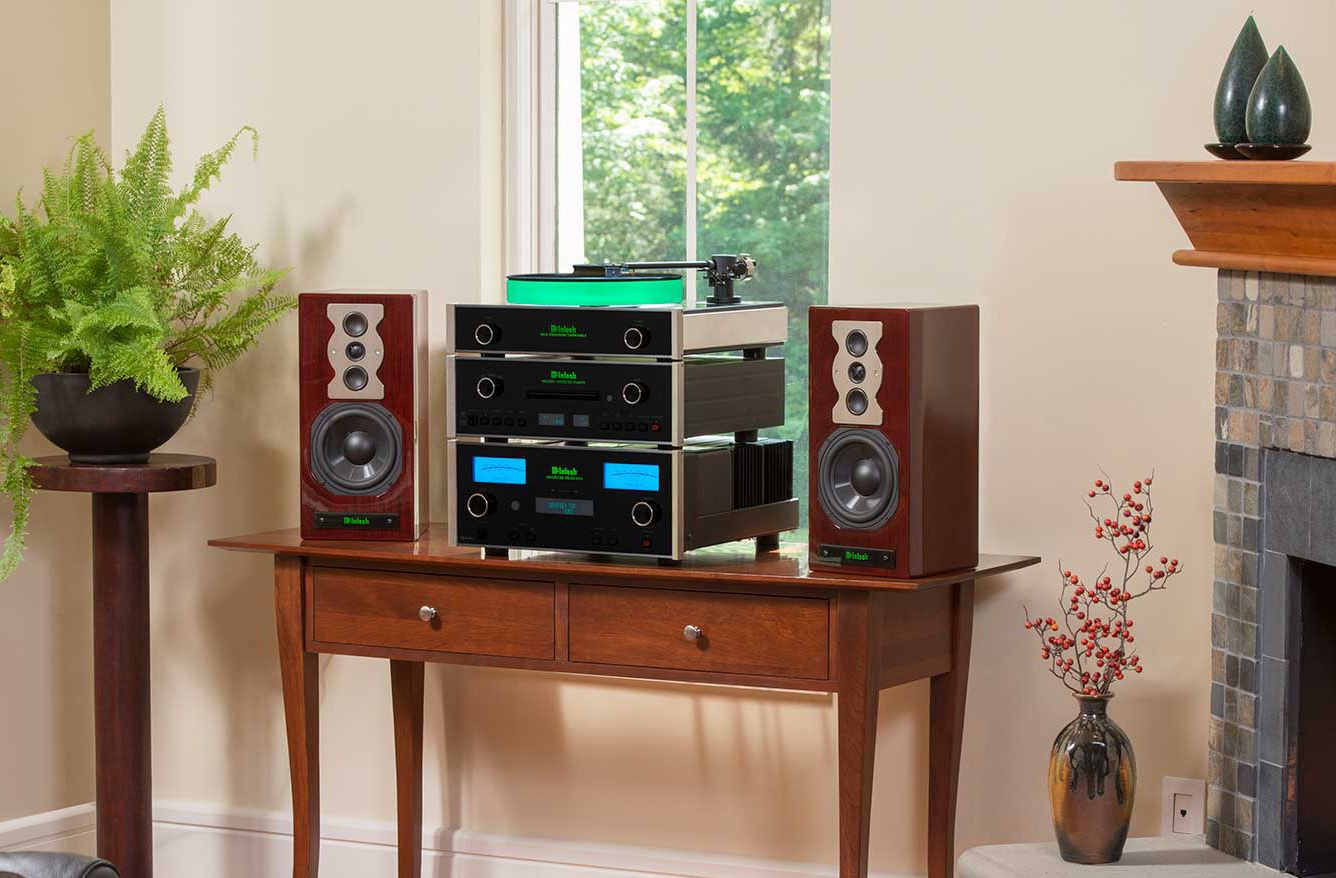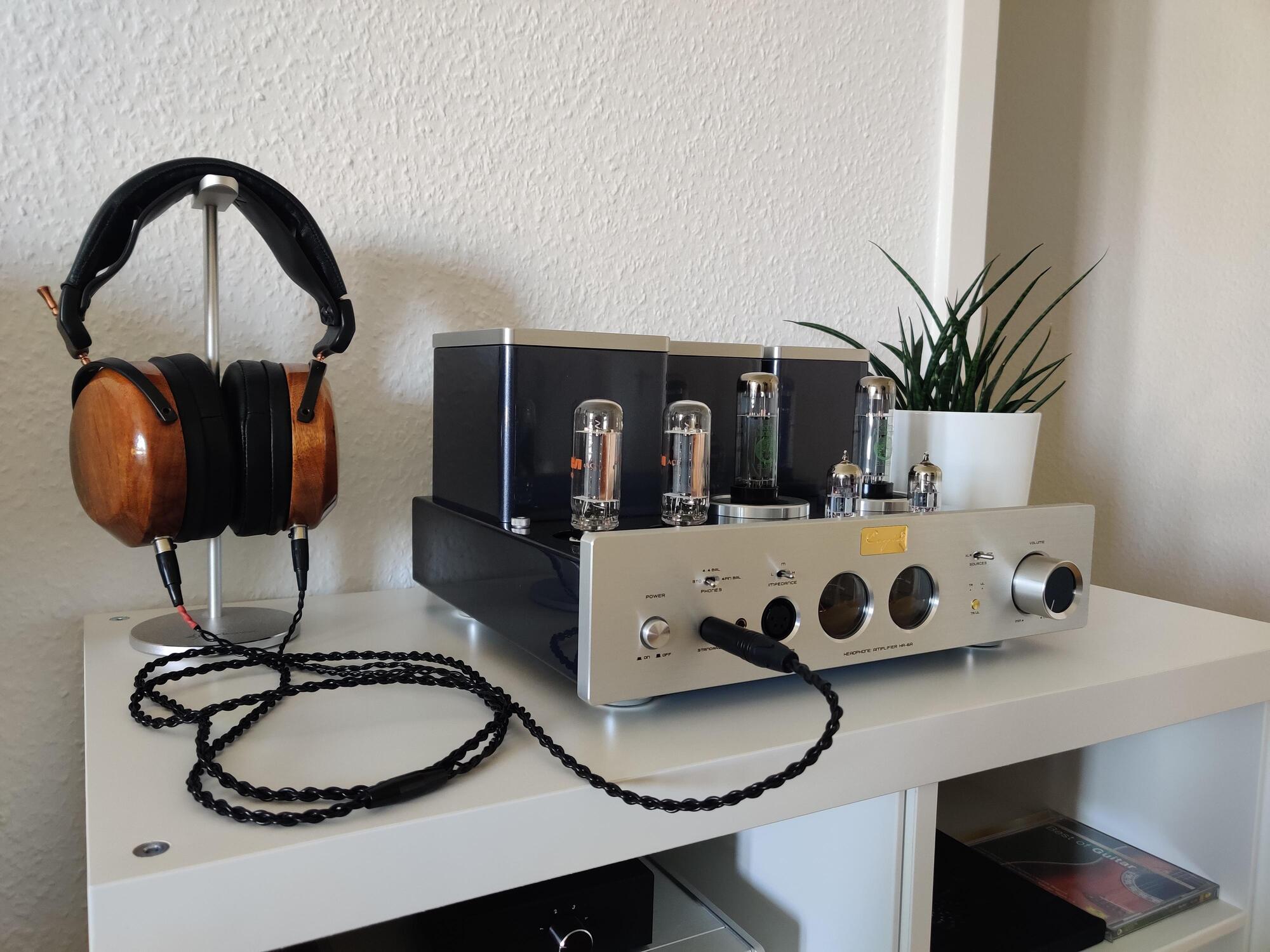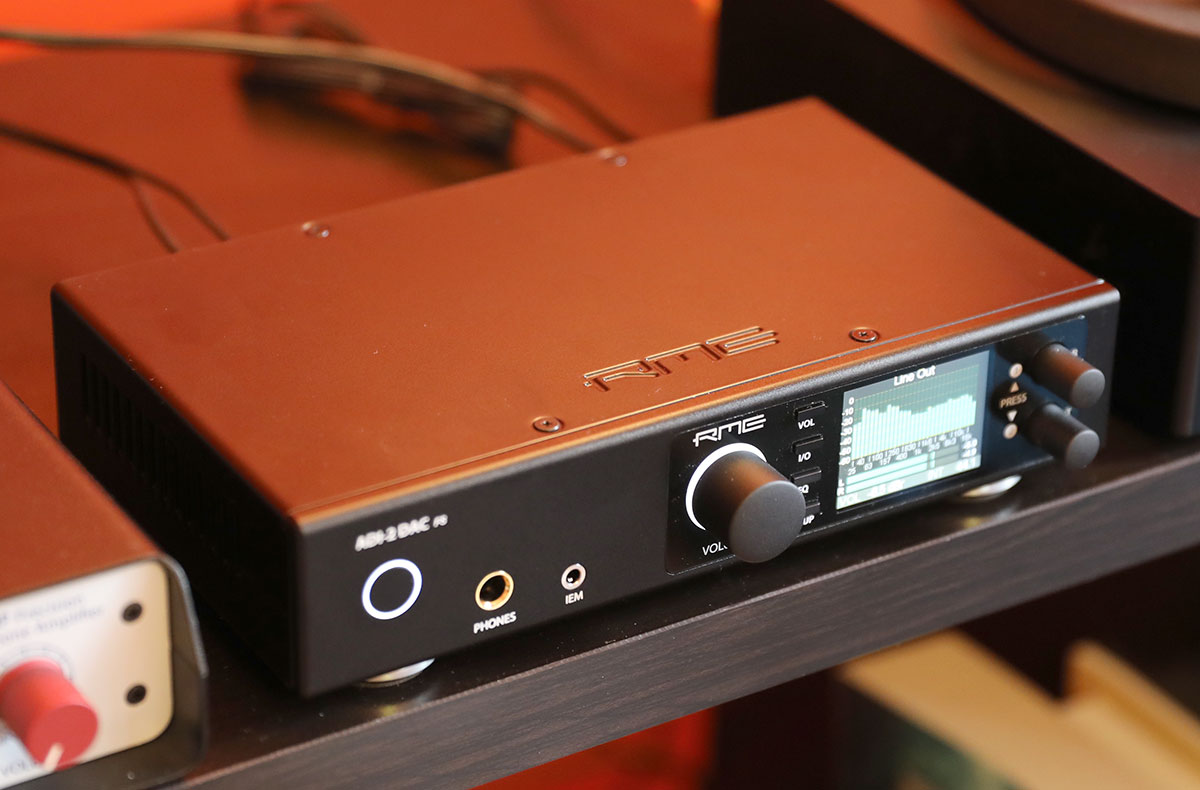Home>Production & Technology>Audiophile>What Is Superior Audiophile Quality?


Audiophile
What Is Superior Audiophile Quality?
Modified: February 18, 2024
Discover the true meaning of superior audiophile quality with our comprehensive guide. Uncover the intricate details and nuances that make an audiophile's experience unmatched.
(Many of the links in this article redirect to a specific reviewed product. Your purchase of these products through affiliate links helps to generate commission for AudioLover.com, at no extra cost. Learn more)
Table of Contents
- Introduction
- Understanding Audiophile Quality
- Factors Affecting Audiophile Quality
- Sound Clarity and Detail
- Frequency Response and Dynamic Range
- Low Distortion and Noise Levels
- Soundstage and Imaging
- Audio Formats and Lossless Compression
- Audio Equipment and Components
- Room Acoustics and Speaker Placement
- Conclusion
Introduction
Welcome to the world of audiophiles, where sound quality is king. Audiophiles are passionate enthusiasts who strive for the highest level of audio reproduction, seeking a listening experience that is as close to the original performance as possible. They invest in high-quality audio equipment, carefully tweak their systems, and search for the best recordings available. But what exactly is superior audiophile quality? In this article, we’ll explore the characteristics that define audiophile quality and discuss the factors that contribute to a superior listening experience.
At its core, audiophile quality refers to the ability of an audio system to accurately reproduce sound, capturing the subtle details and nuances that make a performance come alive. It’s about creating an immersive experience where each instrument and voice is distinct, providing a sense of realism that draws you into the music.
But achieving this level of fidelity requires understanding the different elements that contribute to superior audiophile quality. From the source material and audio formats to the equipment and room acoustics, every aspect plays a crucial role in the final sound reproduction.
This article will delve into the key aspects of audiophile quality, including sound clarity and detail, frequency response and dynamic range, low distortion and noise levels, soundstage and imaging, audio formats and lossless compression, as well as the importance of quality audio equipment and optimizing room acoustics.
If you’re new to the world of audiophilia, this article will serve as a guide to help you understand what makes an audio system stand out. And if you’re already an audiophile, this article will deepen your knowledge and appreciation for the finer details that contribute to an exceptional listening experience.
So, join us on this journey as we explore the fascinating world of superior audiophile quality. Let’s dive into the intricate details that make the difference between a good audio system and one that leaves you breathless.
Understanding Audiophile Quality
Before we delve into the factors that determine superior audiophile quality, let’s first establish a clear understanding of what it means to be an audiophile. Simply put, an audiophile is someone who has a deep appreciation for high-fidelity sound reproduction and is committed to achieving the best possible audio experience.
Audiophiles recognize that music is more than just background noise; it is an art form that evokes emotions and connects us to the world around us. They understand the subtle nuances and nuances in sound production, and their pursuit of audiophile quality is fueled by a desire to capture the essence of the original recording.
However, it’s essential to note that audiophile quality is subjective to some extent. Each individual may have their own preferences and interpretations of what constitutes superior sound quality. Some may prioritize accuracy and neutrality, while others may prefer a warmer, more colored sound signature. Ultimately, it’s about finding the balance that provides the most enjoyable and engaging listening experience for you.
When we talk about audiophile quality, we’re referring to the ability of an audio system to reproduce sound with exceptional precision and fidelity. This means capturing the full range of frequencies, maintaining clarity and detail, and minimizing distortion and noise. A high-quality audio system should reproduce sound in a way that is faithful to the original performance, allowing you to hear every instrument, every note, and every breath.
However, achieving audiophile quality is not solely about having expensive equipment or using the latest audio formats. It’s a holistic approach that considers every element of the audio chain, from the source material to the listening environment. It involves selecting the right components, optimizing the setup, and paying attention to the nuances of the recording itself.
Ultimately, being an audiophile is a continuous journey of exploration and refinement. It’s about seeking out the best recordings, experimenting with different equipment and setup configurations, and constantly refining your listening skills and preferences. It’s a deep appreciation for the artistry of sound reproduction and a commitment to creating a truly immersive and captivating audio experience.
In the next sections, we will explore the specific factors that contribute to superior audiophile quality. From technical specifications to subjective listening experiences, we will unravel the complexities that define the pursuit of perfection in audio reproduction.
Factors Affecting Audiophile Quality
Achieving superior audiophile quality requires considering various factors that impact the overall sound reproduction. These factors encompass both technical aspects and subjective preferences, all working together to create an immersive and high-fidelity listening experience. Let’s explore some of the key factors that contribute to audiophile quality:
- Source Material: The quality of the source material, such as the recording or audio file, plays a significant role in overall sound reproduction. High-quality recordings, whether in analog or digital formats, provide a better foundation for achieving audiophile quality. Lossless formats, such as FLAC or WAV, preserve the original audio data without compression, resulting in more accurate and detailed sound reproduction.
- Audio Formats and Lossless Compression: The choice of audio format can impact the quality of sound reproduction. Lossless formats, as mentioned earlier, preserve the original audio data without sacrificing quality, providing a more authentic listening experience. Conversely, lossy formats like MP3 or AAC use compression algorithms that discard some audio data, resulting in a loss of detail and fidelity.
- Equipment and Components: The audio equipment and components used in the audio chain have a significant impact on audiophile quality. High-quality speakers, amplifiers, DACs (Digital-to-Analog Converters), and cables are essential for accurate sound reproduction. Each component should be selected and matched carefully to ensure optimal performance and synergy.
- Room Acoustics and Speaker Placement: The listening environment and speaker placement within that environment play a crucial role in sound reproduction. Factors such as room size, shape, materials, and the placement of speakers can affect the soundstage, imaging, and overall sonic experience. Proper room treatment, including acoustic panels and diffusers, can help improve the listening environment.
- Sound Clarity and Detail: Achieving audiophile quality involves reproducing sound with exceptional clarity and detail. This means accurately reproducing each instrument and vocal, capturing the nuances and subtleties of the performance. Low levels of distortion and noise are crucial to maintaining clarity and preserving the original intent of the recording.
- Frequency Response and Dynamic Range: A wide frequency response and extended dynamic range are essential for accurate sound reproduction. The frequency response represents the range of frequencies an audio system can reproduce, while the dynamic range refers to the difference between the quietest and loudest sounds. A wide frequency response and dynamic range contribute to a more immersive and lifelike listening experience.
- Soundstage and Imaging: Soundstage refers to the perceived spatial representation of sound, simulating the placement and depth of instruments and vocals. Imaging, on the other hand, relates to the ability of the audio system to accurately position individual sound sources within the soundstage. A well-defined soundstage and precise imaging contribute to a more realistic and engaging listening experience.
It’s important to note that while technical specifications and measurements provide a foundation for determining audiophile quality, subjective listening experiences and personal preferences also play a significant role. Ultimately, achieving audiophile quality is a balance between technical accuracy and the emotional connection to the music.
By considering and optimizing these factors, audiophiles can create a system and environment that allows for the faithful reproduction of sound, capturing the essence and magic of the original performance. In the next sections, we will explore these factors further, delving into the intricacies of sound clarity, frequency response, low distortion, and more. Stay tuned!
Sound Clarity and Detail
One of the fundamental aspects of achieving superior audiophile quality is the reproduction of sound with exceptional clarity and detail. Sound clarity refers to the ability of an audio system to accurately reproduce each component of a sound, from the striking of a drum to the subtle resonance of a violin. Detail, on the other hand, relates to the level of intricate information and nuances that are captured and presented in the audio reproduction.
Audiophiles strive to recreate the recording as faithfully as possible, ensuring that no details are lost or muddled in the process. Achieving sound clarity and detail involves several factors that come together to create a truly immersive listening experience:
- Frequency response: The frequency response of an audio system measures its ability to reproduce sound across the entire audible range. A flat frequency response, where all frequencies are reproduced evenly, is desired in audiophile-quality systems. This ensures that no frequency is over-emphasized or masked, allowing for accurate representation of all instruments and vocals.
- Transient response: Transient response refers to the ability of an audio system to accurately reproduce the quick changes in sound, such as the attack and decay of musical notes. A system with good transient response will capture the subtle nuances and dynamics of the performance, allowing for a more realistic and engaging listening experience.
- Low distortion: Distortion is any alteration or addition to the original sound that is not intended by the recording. Minimizing distortion is crucial for achieving sound clarity and preserving the integrity of the original performance. This includes reducing harmonic distortion, intermodulation distortion, and any other form of unwanted artifacts that may color or distort the sound.
- Low noise levels: Noise refers to any unwanted sound or interference that is present in the audio signal. By minimizing noise levels, audiophile systems can reproduce the music without any distracting background noise. This enhances the clarity and allows for the finer details of the recording to be heard.
- Resolution and bit depth: The resolution and bit depth of a digital audio system impact the level of detail that can be reproduced. Higher resolution and bit depth allow for finer granularity and capturing more subtle details. Audiophile systems often utilize higher-resolution audio formats to ensure that no detail is lost in the digital conversion process.
- Quality of audio components: The quality of the audio components used in the system, such as the speakers, amplifiers, and DACs, directly affects sound clarity and detail. High-quality components are designed to minimize distortion and reproduce sound accurately, resulting in a more detailed and engaging listening experience.
By focusing on these aspects and ensuring that the audio system is optimized for sound clarity and detail, audiophiles can immerse themselves in the music, hearing even the most delicate and subtle elements of a recording. It is through the faithful reproduction of sound that the magic and emotion of a performance can truly be captured and appreciated.
In the next section, we will explore the concept of frequency response and dynamic range, and how they contribute to the overall audiophile quality. Stay tuned as we unravel more secrets behind achieving the ultimate audio experience!
Frequency Response and Dynamic Range
Two crucial factors that contribute to superior audiophile quality are frequency response and dynamic range. These elements play a significant role in accurately reproducing the wide range of sounds present in a recording, allowing listeners to experience music in all its richness and depth.
Frequency response refers to the range of frequencies that an audio system can reproduce. It is typically measured in Hertz (Hz) and represents the spectrum of audible frequencies, from the lowest bass tones to the highest treble notes. A wide and flat frequency response is desirable in an audiophile system because it ensures that all frequencies are reproduced with equal accuracy and balance.
With an extended frequency response, an audio system can faithfully reproduce the full range of musical instruments and vocals, capturing both the deep rumble of a bass guitar and the shimmering high frequencies of a cymbal. The wider the frequency response, the more complete and immersive the listening experience becomes, allowing listeners to hear every detail and nuance present in the recording.
Dynamic range refers to the difference between the softest and loudest sounds that an audio system can reproduce. It is measured in decibels (dB) and signifies the range of sound levels that can be accurately reproduced without distortion or compression. A wide dynamic range is essential for achieving audiophile quality because it allows for the faithful representation of the dynamic variations within a musical performance.
Imagine the soft whispers of a vocalist followed by the thunderous crash of a drum; a system with a wide dynamic range can accurately reproduce these contrasting elements, capturing the full emotional impact of the music. By preserving the delicate nuances in soft passages and delivering the full power of loud peaks, a wide dynamic range enables listeners to experience music as it was intended to be heard.
Both frequency response and dynamic range are interlinked and contribute to the overall fidelity and realism of sound reproduction. A wide frequency response allows for the faithful reproduction of all frequencies, while a wide dynamic range ensures the accurate representation of both quiet and loud passages.
It’s important to note that while specifications provide a basis for evaluating frequency response and dynamic range, subjective listening experience also comes into play. Each individual may have different preferences in terms of how the frequency response is shaped and their tolerance for dynamic range compression. It is crucial to find the balance that suits your own personal taste and sonic preferences.
As you embark on your audiophile journey, pay attention to the frequency response and dynamic range of your audio system. Look for equipment and recordings that prioritize accuracy and fidelity in these areas, and immerse yourself in the full spectrum of sound that music has to offer.
In the next section, we will explore the importance of low distortion and noise levels in achieving superior audiophile quality. Stay tuned as we dive deeper into the intricacies of sound reproduction!
Low Distortion and Noise Levels
In the pursuit of superior audiophile quality, minimizing distortion and noise levels is of utmost importance. Distortion and noise can degrade the fidelity and accuracy of sound reproduction, hindering the ability to fully appreciate the nuances and details in a recording. Audiophiles strive for systems that reproduce sound with minimal interference, allowing music to be experienced in its purest form.
Distortion refers to any alteration or addition to the original sound that is not present in the recording. It can manifest in various forms, including harmonic distortion, intermodulation distortion, and phase distortion. Harmonic distortion occurs when additional frequencies are generated by the audio system, typically at multiples of the original signal’s frequency. Intermodulation distortion results from the interaction between multiple frequencies, creating unwanted artifacts. Phase distortion alters the phase relationship between different frequencies, causing a loss of accuracy and sonic quality.
To minimize distortion, audiophile-quality systems utilize high-quality audio components and employ meticulous design principles. Premium speakers, amplifiers, and DACs are engineered to minimize distortion and reproduce sound as faithfully as possible. Careful attention is given to components such as driver materials, circuit design, and signal pathways to ensure that distortion is kept to a minimum. By reducing distortion, audiophiles can experience music as close to its original form, without any coloration or alteration.
Noise, on the other hand, refers to any unwanted sound or interference that affects the audio signal. It can be introduced at various stages of the audio chain, including during recording, playback, or transmission. Noise can arise from electrical interference, poor grounding, or inherent limitations in analog or digital components. When noise is present, it obscures the fine details and subtle nuances in the music, reducing the clarity and overall listening experience.
Audiophile-quality systems are designed to minimize noise levels and preserve the integrity of the audio signal. This involves using high-quality cables and connectors, proper shielding techniques, and attention to grounding and power supply quality. Additionally, the use of low-noise components and careful system setup contribute to reducing noise levels. By achieving a low noise floor, audiophiles can experience a greater level of detail and transparency in the music, allowing for a more immersive and engaging listening experience.
It’s important to note that while complete elimination of distortion and noise is practically impossible, striving for low levels is key. Achieving a balance between technical accuracy and subjective preference is crucial in the pursuit of audiophile quality. Each individual may have their own tolerance for distortion and noise, and finding the balance that suits your personal taste is essential.
By minimizing distortion and noise levels, audiophiles can fully appreciate the subtleties, nuances, and dynamic range of a recording. Music comes alive with clarity and precision, allowing for a more intimate connection and a deeper appreciation of the artistry involved.
In the next section, we will explore the concepts of soundstage and imaging, and how they contribute to creating a realistic and immersive audio experience. Stay tuned for more insights!
Soundstage and Imaging
One of the key elements that contribute to an exceptional audiophile listening experience is the concept of soundstage and imaging. Soundstage refers to the spatial representation of sound, simulating the placement and depth of instruments and vocals. Imaging, on the other hand, relates to the ability of an audio system to accurately position individual sound sources within the soundstage. Together, they create a three-dimensional sonic environment that allows listeners to perceive the music as if they were right there in the recording venue.
Soundstage is the perceived spatial dimension of sound. It creates the illusion of width, depth, and height within the sonic presentation, creating a sense of space and ambiance. A well-defined soundstage extends beyond the physical boundaries of the speakers, enveloping the listener with a lifelike and immersive audio experience. It allows for the precise placement of instruments and vocals, transporting the listener to the recording space.
Imaging, on the other hand, is the ability of an audio system to accurately position individual sound sources within the soundstage. It involves capturing the spatial cues present in the recording, such as the timing, phase, and amplitude differences between channels. Accurate imaging allows listeners to locate instruments and vocals in specific positions, creating a realistic and engaging listening experience.
To achieve an expansive soundstage and precise imaging, several factors come into play:
- Speaker Placement: Proper speaker placement is critical for creating an accurate soundstage. Carefully positioning the speakers in relation to each other and the listening area helps to establish a wide and cohesive sonic image. Some techniques, such as the use of toe-in angles, can further enhance imaging by focusing the sound towards the listener.
- Room Acoustics: The acoustic characteristics of the listening room have a significant impact on the perceived soundstage. Factors such as room size, shape, and acoustic treatment can influence the reflections and resonances within the space, affecting the overall spatial representation. Proper room treatment, including the use of acoustic panels and diffusers, can help optimize the soundstage by minimizing unwanted reflections and resonances.
- Stereo Imaging Techniques: Recording engineers employ various stereo miking techniques to capture and recreate a realistic soundstage. Techniques like spaced pair, coincident pair, and binaural recording can provide different perspectives and imaging characteristics, allowing listeners to experience the music in different spatial arrangements.
- Playback Equipment: High-quality speakers and components play a crucial role in accurate soundstage reproduction. Well-designed speakers with proper driver alignment and crossover integration are essential for creating a convincing soundstage. Additionally, careful selection and matching of amplifiers, DACs, and cables contribute to maintaining the integrity of the stereo image.
Having a well-defined soundstage and precise imaging allows audiophiles to experience music in a more lifelike and engaging manner. It adds dimensionality to the sound, enhancing the realism and emotional impact of the recording. By accurately placing instruments and vocals within the sonic landscape, it creates a sense of presence that immerses listeners in the performance.
However, it’s important to note that soundstage and imaging are subjective experiences and can vary based on personal preferences and listening conditions. Each individual may have a different perception of the soundstage, and finding the optimal positioning and setup to achieve the desired effect is an ongoing exploration in the audiophile journey.
In the next section, we’ll explore the significance of audio formats and lossless compression in achieving superior audiophile quality. Stay tuned as we uncover the importance of preserving the fidelity of the original recording!
Audio Formats and Lossless Compression
When it comes to achieving superior audiophile quality, the choice of audio formats and the use of lossless compression play a crucial role. Audio formats determine how the digital audio data is stored and encoded, while lossless compression techniques ensure that the original audio quality is preserved during the compression process.
Audio Formats: There are various audio formats available, each with its own characteristics and levels of audio quality. Common formats include uncompressed WAV, lossless FLAC, Apple Lossless (ALAC), and high-resolution formats like DSD and MQA. The choice of audio format depends on factors such as compatibility, file size, and desired level of audio quality.
Audiophiles often prefer uncompressed or lossless audio formats because they preserve the full fidelity and detail of the original recording. Uncompressed formats like WAV store audio in a raw and uncompressed form, offering a bit-perfect representation of the original recording. Lossless formats, such as FLAC and ALAC, compress the audio data without sacrificing any quality, resulting in smaller file sizes while maintaining the integrity of the audio.
Lossless Compression: Lossless compression techniques allow for the reduction of file size without any loss of audio quality. Unlike lossy compression algorithms, which discard certain audio data to achieve smaller file sizes, lossless compression algorithms retain all the information from the original recording. This means that the audio can be decompressed and reconstructed to its original form without any loss of detail or fidelity.
Lossless compression is particularly important for audiophiles because it allows for efficient storage and transmission of high-quality audio files. By utilizing lossless compression techniques, audiophiles can enjoy the convenience of smaller file sizes without compromising on sound quality. This is especially beneficial for those who have extensive audio libraries or for streaming services that aim to deliver high-fidelity audio over limited bandwidth.
When it comes to choosing audio formats and compression methods, it is essential to consider the trade-offs between audio quality, file size, and compatibility. Lossless audio formats provide the closest representation of the original recording, while lossy formats like MP3 or AAC offer smaller file sizes but sacrifice some degree of audio quality.
Audiophiles often strive to obtain the highest possible audio quality and prioritize the use of lossless audio formats in their systems. This ensures that every detail and nuance of the original recording, from the subtlest instrument timbre to the quietest background elements, is faithfully reproduced. By using lossless compression techniques, the audio remains pristine and true to the artist’s vision.
However, it’s important to note that the choice of audio format should also be balanced with considerations of storage capacity, device compatibility, and personal preferences. Each format has its own strengths and limitations, and finding the right balance between audio quality and practicality is essential.
In the next section, we will explore the significance of high-quality audio equipment and components in achieving superior audiophile quality. Stay tuned as we dive into the world of audio gear and its impact on sound reproduction!
Audio Equipment and Components
In the quest for superior audiophile quality, the selection and quality of audio equipment and components play a significant role. Audiophiles understand that each element in the audio chain contributes to the overall sound reproduction, and therefore invest in high-quality gear to achieve the best possible listening experience.
Speakers: The speakers are perhaps the most critical component in an audio system. They are responsible for converting electrical signals into sound waves. High-quality speakers are designed with precision and attention to detail, utilizing advanced drivers, crossovers, and enclosures to produce accurate and lifelike sound. Audiophiles often choose speakers that match their preferred sound signature and faithfully reproduce the intricate details of the recording.
Amplifiers: Amplifiers are essential for powering the speakers and ensuring that the audio signals are delivered with sufficient power and control. High-quality amplifiers provide clean and accurate amplification, allowing the speakers to accurately reproduce sound without adding coloration or distortion. Audiophiles often opt for amplifiers that have low distortion, high power reserves, and compatibility with the speakers they are using.
Digital-to-Analog Converters (DACs): DACs are responsible for converting digital audio signals into analog signals that can be accurately reproduced by the speakers. They play a crucial role in maintaining the fidelity of the original recording during the digital-to-analog conversion process. Audiophiles often choose DACs that offer high resolution, low distortion, and excellent dynamic range to ensure accurate sound reproduction.
Cables and Interconnects: Cables and interconnects carry the audio signals between components, and the quality of these connections can significantly impact the sound quality. Audiophiles often opt for high-quality cables with properly shielded conductors and robust connectors to minimize signal loss and interference.
Source Components: Source components, such as CD players, turntables, and digital music servers, play a critical role in retrieving and delivering the audio signal to the rest of the system. High-quality source components can extract the audio data with utmost accuracy, preserving the integrity of the recording and providing a clean signal for further processing.
Power Conditioning: Power conditioning components, such as power conditioners and voltage regulators, help ensure a clean and stable power supply to the audio system. They filter out unwanted noise and interference from the electrical grid, minimizing any potential degradation in sound quality caused by fluctuations or disturbances in the power supply.
Racks and Isolation: Proper equipment placement and isolation techniques are crucial to minimize vibrations and resonances that can negatively impact sound quality. Audiophiles often use dedicated audio racks and isolation devices to reduce unwanted vibrations and resonance that can affect the performance of sensitive components, especially turntables.
It’s important to note that while high-quality audio equipment and components are crucial for achieving exceptional audiophile quality, they should also be selected and matched carefully to ensure cohesion and synergy within the system. Compatibility between components and proper setup and calibration are key to obtaining the best possible sound reproduction.
Ultimately, investing in high-quality audio equipment and components allows audiophiles to enjoy a more faithful and immersive listening experience. Each element contributes to the overall sound reproduction, working together to capture the finer details and emotions in a recording. By carefully selecting and optimizing your audio gear, you can unlock the full potential of your music collection and elevate your audiophile journey to new heights.
Next, we’ll explore the importance of room acoustics and speaker placement and how they impact audiophile quality. Stay tuned for valuable insights on optimizing your listening environment!
Room Acoustics and Speaker Placement
When it comes to achieving superior audiophile quality, considering room acoustics and speaker placement is essential. The environment in which you listen to music greatly influences the overall sound reproduction, and careful attention to room acoustics and speaker placement can significantly enhance the listening experience.
Room Acoustics: The acoustic characteristics of the listening room can have a profound impact on the sound quality. Factors such as room size, shape, wall materials, and furnishings can affect the way sound waves interact, leading to reflections, resonances, and other acoustic anomalies.
Optimizing room acoustics involves various techniques and considerations, including:
- Acoustic Treatment: The use of acoustic treatment, such as absorption panels, diffusers, and bass traps, helps to manage the reflections and resonances within the room. These treatments help to minimize unwanted echoes, slap echoes, and standing waves, resulting in a more balanced and controlled sound.
- Speaker-Listener Position: The placement of speakers and the listener within the room is crucial for achieving optimal sound reproduction. The distance between the speakers and the listener, as well as the positioning in relation to room boundaries, greatly impacts the soundstage and frequency response. Experimenting with different positions and room orientations can help find the sweet spot for optimal sound reproduction.
- Furnishing and Room Layout: The choice of furnishings, such as curtains, rugs, and bookshelves, can help mitigate excessive reflections and reverberations. Additionally, the overall layout of the room, including the placement of furniture and the arrangement of reflective surfaces, can have an impact on the overall sound quality.
- Bass Management: Dealing with low-frequency sound reproduction can be particularly challenging, as low-frequency waves are more sensitive to room dimensions and boundary interactions. The use of bass traps and proper subwoofer placement can help address issues such as bass nulls, excessive bass buildup, and uneven bass response.
Speaker Placement: Proper speaker placement is critical for achieving accurate and immersive sound reproduction. It involves finding the optimal distance between the speakers and the listener, as well as positioning them correctly within the room.
Considerations for speaker placement include:
- Stereo Triangle: The formation of a stereo triangle, with the listener positioned at the apex and the speakers forming the base, is a common approach for placement. This helps ensure balanced sound imaging and soundstage representation.
- Distance from Room Boundaries: The distance between the speakers and the walls, as well as the distance between the speakers themselves, can impact the overall sound balance and bass response. Experimenting with different distances and orientations can help achieve the desired sonic characteristics.
- Toeing-In: Angling the speakers inward towards the listener, known as toeing-in, can help enhance stereo imaging and soundstage focus.
- Height Alignment: The height alignment of the speakers is also important, as it affects the representation of vertical sound information. Ensuring the tweeters are at ear level or employing speaker stands to provide the correct height alignment can enhance the overall sound quality.
By optimizing room acoustics and speaker placement, audiophiles can create a more controlled and accurate listening environment. This allows for better sound imaging, improved soundstage representation, and a more balanced frequency response. It brings the music to life, providing a more immersive and enjoyable listening experience.
It’s important to note that each listening room is unique, and finding the ideal balance and configuration may require some experimentation and adjustments. Professional assistance from an acoustics expert can provide valuable insights and recommendations tailored to your specific room and audio system.
Next, we’ll conclude our exploration of audiophile quality and summarize the key elements to consider in achieving the ultimate listening experience.
Conclusion
In the world of audiophiles, the pursuit of superior sound quality is a never-ending journey. It involves a deep appreciation for the nuances and intricacies of music and a quest to recreate the original performance as faithfully as possible. Achieving audiophile quality requires attention to detail and consideration of several key factors.
Understanding audiophile quality begins with recognizing that it is subjective to some extent. Each individual may have their own preferences and interpretations of what constitutes superior sound reproduction. It’s about finding the balance that provides the most enjoyable and engaging listening experience for you.
Factors that impact audiophile quality include sound clarity and detail, frequency response and dynamic range, low distortion and noise levels, soundstage and imaging, audio formats and lossless compression, as well as the quality of audio equipment and the optimization of room acoustics and speaker placement.
Sound clarity and detail involve accurately reproducing each component of a sound and capturing the intricacies of the music. Frequency response and dynamic range play a role in faithfully representing the full range of frequencies and the variation in sound levels within a recording.
Minimizing distortion and noise levels is crucial for maintaining the fidelity of the original recording. Distortion alters the original sound, while noise masks subtle details and interferes with the listening experience.
Soundstage and imaging contribute to the spatial representation and placement of sound sources within the soundstage. They create a three-dimensional sonic environment that enhances the realism and immersion of the music.
Audio formats and lossless compression are important for preserving the audio quality of the original recording. Lossless formats ensure that no audio data is lost during compression, while different audio formats offer varied levels of audio quality and compatibility.
The selection and quality of audio equipment and components are imperative for achieving superior audiophile quality. Speakers, amplifiers, DACs, cables, and source components all contribute to accurate sound reproduction and maintaining the integrity of the audio signal.
Room acoustics and speaker placement impact the overall sound quality. Optimizing the acoustics of the listening environment and properly positioning the speakers allow for a more controlled and accurate sound reproduction.
While achieving audiophile quality involves technical aspects, it is also a subjective and personal experience. Finding the balance between technical accuracy and personal preference is crucial.
In conclusion, the pursuit of superior audiophile quality is a multi-faceted endeavor that combines technical knowledge, careful equipment selection, and a passion for the artistry of sound reproduction. By understanding and optimizing the factors that impact sound quality, audiophiles can immerse themselves in a truly captivating and exceptional listening experience.











